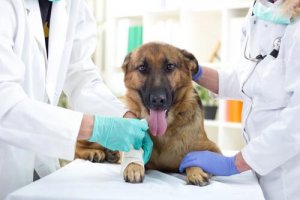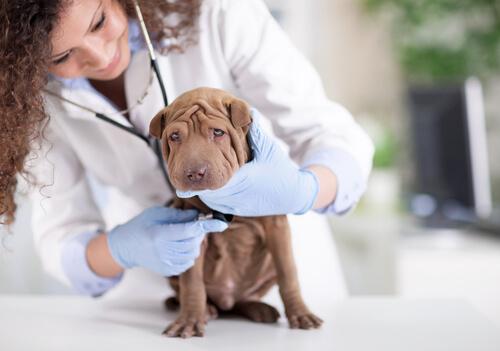How do Emergency Vet Services Work?

There are many possible reasons for pet emergencies. For example, fractures, choking and object obstructions in the respiratory tract, toxic foods, births in the middle of the night with complications, etc. In today’s article, we’ll be taking a look at emergency vet services and how they work.
The number of clinics and veterinary centers that have emergency vet services is increasing. They’re open when the rest of the clinics are closed: from nine o’clock at night from Monday to Saturday, all day Sunday, and on national holidays.
Since there are no specific national regulations for these services, each one operates according to its own rules. In some cases, your regular specialist will suggest going to the emergency room. In other cases, the pet owner will decide right away to take the animal to emergency vet services.
Getting your animal to the emergency vet services

Certain animal clinics and hospitals have their own veterinary ambulances to transfer animals during emergencies. This type of service is very useful when the animal suffers from mobility problems—either due to an accident, a disability or old age. These services are also useful if the owner is an elderly person or if he lacks the appropriate means to transport his pet.
However, animal hospitals having their own ambulances is not yet the norm. So, one may need to resort to a taxi that permits taking animals, or asking a favor from a family member or friend.
Deciding whether to take your dog to a veterinary emergency center is a tricky decision. If he’s had an accident or suffered a fracture, you should call the vet beforehand. The medical professionals will be able to give you advice on how to safely transfer him in a private vehicle.
Generally, if you’re transporting him by car, he shouldn’t be on the ground. Any sudden braking could be very dangerous for him. The best thing to do is to put him in a suitable carrier or have him strapped in with a safety harness; this should be attached to the back seats.
Dog and cat ambulance characteristics
Dog and cat ambulances really aren’t that different from those used for humans. You just need to make some adjustments inside the vehicle so that it will work for furry patients.
First, you’ll need to leave space in the rear of the vehicle since this is where the animal will travel. In that way, if the dog is large (20 or 30 kilos), he’ll still feel comfortable during the trip. There are also stretchers for the animals. These unfold so that the dog can travel comfortably, with his legs stretched out.
Of course, there are many accessories that the animal ambulance will need to have. For example: cages, oxygen, disinfectant material, microchip readers, bandages and other materials. They will also require some precision vet equipment such as transporters, belts, muzzles, harnesses, security ties for dogs and anything else that they might need in these emergency situations.
Certain ambulances also work alongside some pet protection agencies.
Some tips for veterinary emergencies

- We should know exactly where the nearest veterinary clinics and centers are in the event of an emergency. Time is gold in these types of situations.
- You should always have the phone numbers of these centers handy, as you may have to call at the most unexpected moments.
- Your pet may have an accident or issue that isn’t too serious. In this case, you should contact a professional at the clinic. This will save you the trouble of transporting your pet late at night if it’s not completely necessary.
- Some private pet insurances have coverage for emergency care and situations. It’s important to read your contract well and to pay special attention to the fine print.
- Bites from other dogs, bleeding wounds, complicated cesarean sections, and poisonings are common pet emergencies.
This text is provided for informational purposes only and does not replace consultation with a professional. If in doubt, consult your specialist.